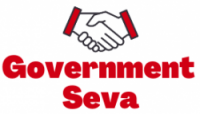What is E-Governance?
Gujarat has been a pioneer in the implementation of e-governance initiatives and projects in India. Gujarat has been certified as one of the most e-ready states in the country by independent organisations. The state government has implemented creative and progressive initiatives to promote e-governance in the state.
Gujarat is a rising leader in e-readiness initiatives and IT policy. Gujarat is classed as L2 Stage in Information Communication Technologies (ICTs) based on Environment, Readiness, and Usage Applications. Awarded for Best e-Governance, Gujarat is a forerunner in the execution of e-governance policies and programmes, as well as the establishment of crucial infrastructure for E-Governance.
Integrated Workflow and Document Management System (IWDMS) as a part of the E-Governance Initiatives
The Gujarat government uses e-Governance as a tool to increase accountability, transparency, and effectiveness in government administration. For this purpose, the Integrated Workflow and Document Management System (IWDMS) project has been developed by automating government operations and procedures at all levels of the administrative structure. For the effective execution of the IWDMS project, GoG has prioritised Change Management and a top-down strategy. It integrates Document Management, Workflow Management, Collaborative Environment, and Knowledge Management to offer an Electronic Workplace that improves government efficiency.
Objectives of IWDMS
- Establish an Office Management System to provide effective and transparent management.
- Increase Productivity
- Use IT as a tool to aid in day-to-day tasks.
- Turn on Policy-Based Processing.
- Allow for the prioritising of tasks by providing a framework for information exchange among multiple government agencies.
- Encourage a productive workplace.
IWDMS’s Most Important Components
- The File Management System is made up of apps that cater to file processing needs such as inward/outward, producing and transferring files, monitoring and tracking files, making orders, and keeping track of files and correspondences.
- The Workflow/Organization Model provides the organisational structure, which includes the department’s hierarchy, responsibilities, reporting relationships, subjects they deal with, and sections they belong to.
- The life cycle of a document and its facilities is tracked by a document management system. Document versioning and maintenance are automated.
- The Knowledge Management System is a repository of numerous Governmental papers that can be searched by name, description, publication date, and so on.
- The Dashboard is an Executive Information System that allows an officer to monitor and oversee the work that falls within his or her authority.
- MIS comprises of tailored reports in various forms that cater to all of the Secretariat’s day-to-day tasks. The reports are parameterized, and they may be constructed by combining the appropriate parameters.
- Business applications cater to the issues dealt with and accomplish automation of job tasks, office operations, and employee service concerns.
- Administrative applications design and manage the organisational model while providing secure access via user and role-based rights.
Features
- The traceability of multiple papers inside and between departments is simple.
- A feature that allows you to distribute documents, files, and correspondence to numerous people with a single click.
- A built-in communication monitoring system (email communication system)
- A built-in dashboard that provides a comprehensive picture of task distribution applied to me and my downstream notion
- All system transactions have an audit trail.
- Communique Monitoring is a strong internal communications technology used by government departments that include key characteristics of an email messaging system.
Advantages
- Monitoring and control that is effective
- Creating a knowledge foundation from numerous government documents
- Office with less paper
- Routine tasks are automated using workflows, business rules, and processes.
- Automatic file number generation and tracking
- Work / Task Prioritization with Officer Reminders
- Common procedure standardisation
- Create an atmosphere conducive to efficient administration.
- 24-hour access
- Pictorial dashboard — Display a comprehensive status with drill-down capabilities.
- Action traceability and accountability – Audit trail
